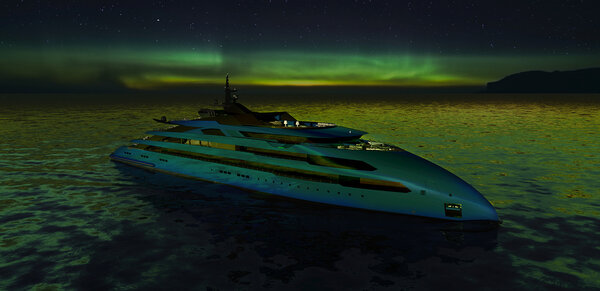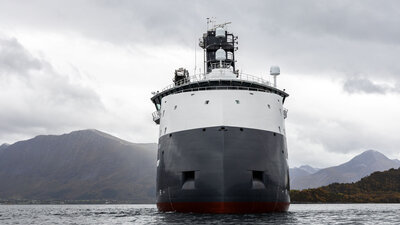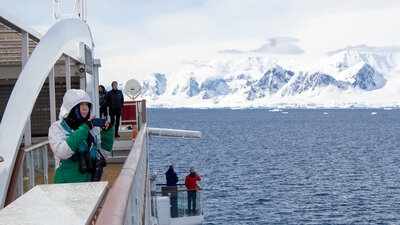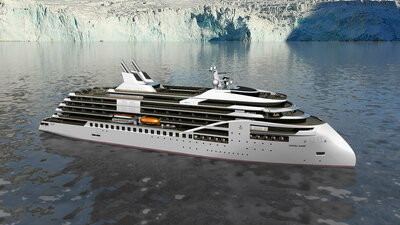The X-BOW® was introduced by the ship design company Ulstein in 2005, and has been developed to make sea operations safer, more comfortable and more enjoyable for everyone on board, regardless of where the vessel is heading. The first X-BOW vessels were offshore vessels, working in some of the world's roughest waters.
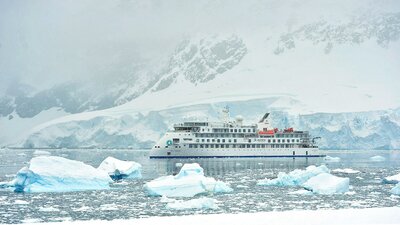
Now, the first cruise players are integrating the X-BOW® design on expedition ships. Although cruise vessels generally do not seek out adverse conditions, there is not much to be done if the weather turns bad. Even cruise vessels must sometimes endure rough conditions on their way to isolated and unspoilt areas.
Such as the first expedition cruise vessel, which, on her way from South Africa to Ushuaia in Argentina, ran into a storm:
'In big seas I kept waiting for the slamming - it never came'
Captain, 'Greg Mortimer' expedition cruise vessel
A smooth ride
An X-BOW vessel is curved backwards with more volume in the fore ship. The bow slices the waves to continue its smooth course. Because it uses less fuel to get through the waves, it also minimises emissions.
As the bow cuts through the waves instead of having them crash into the hull, sea spray is reduced on deck. In safe conditions, passengers can linger about on the observation decks, enjoying the surroundings and taking photos with an excellent view down on the bow tip.
A safe ride
The X-BOW® has been tested in most weather conditions and some of the harshest areas of the world. One of the X-BOW® vessels travelled the Northern Sea Route, the entire route in Arctic waters north of Russia. Another met a tropical hurricane and went straight through it, keeping speed up. A third is permanently positioned, year-round, in the Arctic waters of the Barents Sea. The ship's primary purpose is to assist offshore platforms in emergencies. The crews on X-BOW® vessels report fewer wave-induced head-on movements and no slamming.
"Less shaking, it also means less vibration, less noise and less splashing"
Arnkjell Brandal, first Master of 'Bourbon Orca'
Higher transit speed
The vessel can maintain its speed while maintaining comfort. The passengers will experience shorter time spent in open seas and waves, with softer motions and reduced vibrations. This will increase their opportunities to make the most of their time on board, attending lectures and entertainment, filming and photographing, taking part in fitness activities, enjoying fine dining, and all other activities on board the vessel.
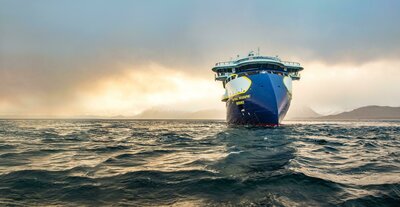
Reduced environmental impact
When designing a ship or developing a product, we keep in mind their life cycle environmental impact. Any product will have an impact when being produced, when being in use, and when taken out of use. We take on the responsibility to deliver long-lasting ships that are more energy efficient and that can be powered by renewable energy sources or by low-carbon solutions. We constantly work to implement new environmental standards and safety regulations in new vessels to reduce the overall impact. The X-BOW® is an important part of reducing environmental footprint. The soft entry in waves means that the vessel needs less fuel, and thus produces less emissions.
Are you ready to go?
